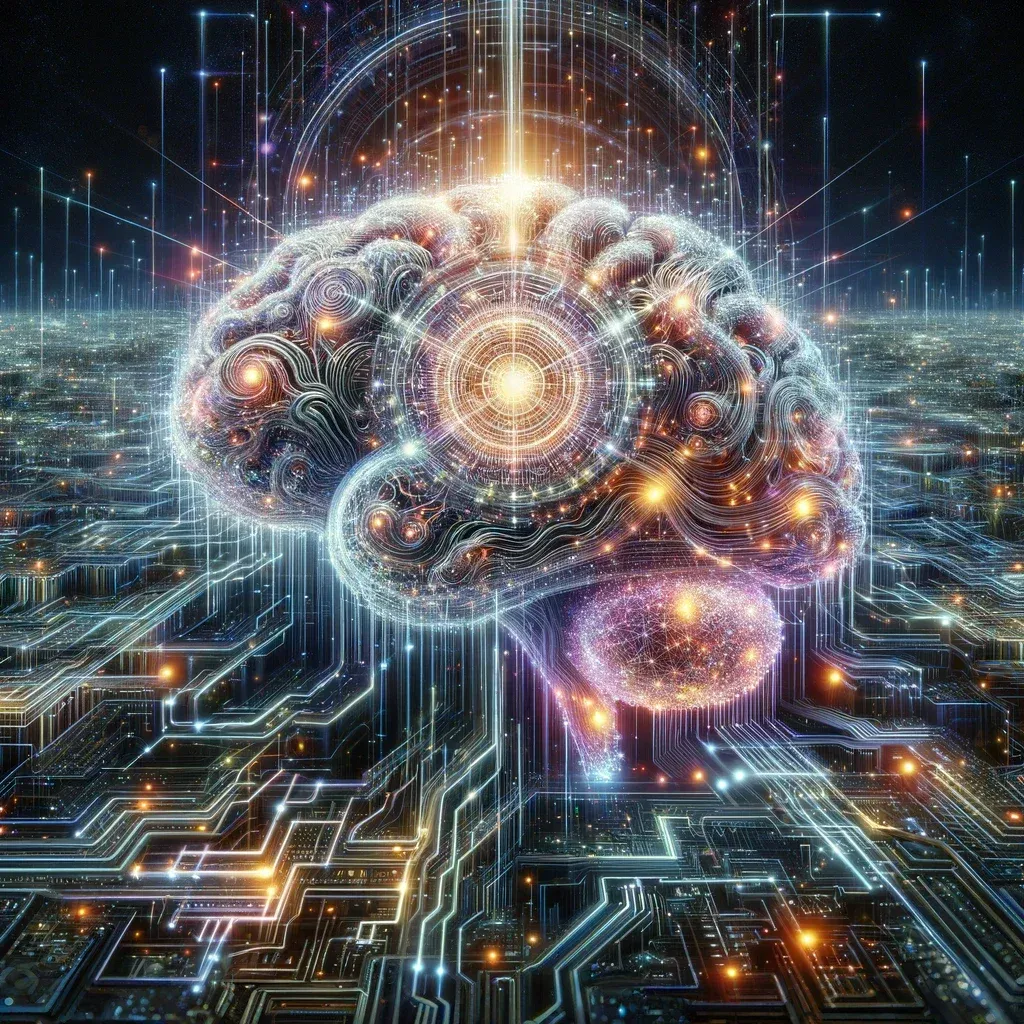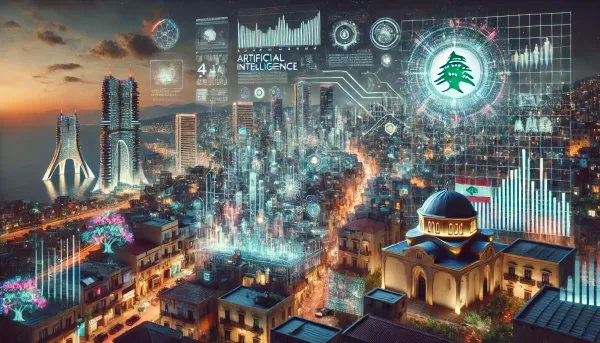Artificial Intelligence (AI) Terminology

What is artificial intelligence (AI)?
Artificial intelligence (AI) refers to the technology that enables machines to mimic human intelligence. This encompasses a range of capabilities such as understanding language (natural language processing), recognizing speech patterns (speech recognition), interpreting visual information (machine vision), and making decisions (expert systems). AI systems are designed to perform tasks that typically require human intellect, making processes more efficient and smarter.
How does AI work?
The excitement around artificial intelligence (AI) is at an all-time high, and companies are eagerly branding their products with the AI label. However, the term AI is often used to describe just one piece of the puzzle, such as machine learning. True AI involves a blend of specialized hardware and software designed for developing machine learning models. While there’s no exclusive language for AI, Python, R, Java, C++, and Julia are favorites among developers due to their AI-friendly features.
At its core, AI operates by digesting vast amounts of labeled data, spotting trends and patterns within, and using these insights to predict what’s next. For example, a chatbot learns to mimic human conversation by analyzing numerous text samples, or an image recognition tool identifies objects in photos by reviewing vast quantities of image data. The latest advancements in generative AI are even creating authentic-seeming texts, images, and media.
AI programming is all about replicating human cognitive abilities, which include:
- Learning: AI learns by gathering data and formulating algorithms, or sets of rules, which guide devices in performing tasks.
- Reasoning: This involves selecting the most effective algorithm to achieve a specific goal.
- Self-correction: AI continually refines these algorithms to ensure accuracy.
- Creativity: AI employs neural networks and various techniques to craft new visuals, texts, music, and ideas.
Exploring the Four Types of Artificial Intelligence
Artificial Intelligence (AI) has evolved into four distinct types, each with varying capabilities and complexities. Here’s a clear breakdown of these AI categories:
- Reactive Machines: These are the most basic form of AI. They react to specific situations with predefined responses. Think of them as sophisticated machines that can play chess, where they analyze possible moves but don’t have memory of past games.
- Limited Memory AI: This type of AI can make informed and improved decisions by studying past data. It’s widely used in self-driving cars, which continually collect and process information to navigate the road safely.
- Theory of Mind AI: This advanced form of AI is still in development. It aims to understand and interpret human emotions, beliefs, and thought processes. Once fully realized, this AI will significantly improve interactions between humans and machines.
- Self-aware AI: This is the future of AI—machines with self-awareness. These AI systems will have their own consciousness and emotions, representing the pinnacle of AI research.
These types demonstrate the progression of AI technology, from simple rule-based systems to complex, self-aware entities that could revolutionize our interaction with technology.
Augmented Intelligence VS. Artificial Intelligence

Augmented Intelligence and Artificial Intelligence (AI) are two concepts often used in the tech world, but they have distinct differences.
Artificial Intelligence
Artificial intelligence refers to machines or systems designed to mimic human intelligence. AI systems perform tasks that typically require human understanding, such as recognizing speech, interpreting data, and making decisions. It also aims to create machines that can operate autonomously, without human intervention.
Augmented Intelligence
Augmented Intelligence is a design philosophy centered around enhancing human capabilities rather than replacing them. It combines human intuition and experience with AI’s data-processing efficiency to improve decision-making. Augmented Intelligence tools are meant to work alongside humans, providing them with enhanced cognitive functions, such as advanced analytics or decision support.
While AI can function independently to solve problems, Augmented Intelligence is about empowering humans with AI support, ensuring that human intelligence remains at the forefront of the decision-making process.
The Journey of Artificial Intelligence: From Concept to Reality
Artificial Intelligence (AI) has a rich history that dates back to the ancient myths of intelligent robots and automatons. However, its scientific foundation began to solidify in the 20th century:
- Early Concepts and Theoretical Foundations (1910s-1940s): The Mundaneum, established by Paul Otlet and Henri La Fontaine in 1910, sought to classify world knowledge, an early semblance of AI’s data organization. Leonardo Torres y Quevedo created a chess-playing machine in 1914, and Karel Čapek coined the term “robot” in 1921. Warren S. McCulloch and Walter Pitts’ work on artificial neurons in 1943 laid groundwork for neural networks.
- Birth of Artificial Intelligence (1950s): AI’s official inception was at a 1956 Dartmouth workshop proposed by John McCarthy, Marvin Minsky, Nathaniel Rochester, and Claude Shannon. This followed notable developments like Turing’s 1950 paper on machine intelligence and Turing Test, and Arthur Samuel’s 1952 computer checkers-playing program, which was also the first program that learned on its own.
- Rapid Developments and Early Successes (1960s): In 1961, the first industrial robot, Unimate, began working at a General Motors plant. The same decade saw the creation of LISP by John McCarthy, a programming language integral to AI research, and the term “machine learning” was coined by Arthur Samuel in 1959.
- AI Winter and Resurgence (1970s-2000s): AI experienced periods of hype followed by disappointment, leading to the first “AI Winter” in the 1970s, where funding and interest waned. It wasn’t until the 1980s, with the Fifth Generation Computer Systems project, that AI saw renewed interest, which continued into the 21st century with advancements in machine learning, big data, and computational power.
These milestones illustrate AI’s evolution from theoretical concepts to practical applications, driven by both technological advancements and a deeper understanding of how to emulate the cognitive processes of the human mind.
FAQs
How does AI work?
Artificial Intelligence works by processing large amounts of data and learning from it to make decisions or predictions. It uses algorithms, which are sets of rules and calculations, to analyze the information.
Is AI Dangerous?
Artificial Intelligence itself is not inherently dangerous. However, like any technology, if it’s designed or used improperly, it can pose risks. The safety of AI depends largely on human decisions in its design, implementation, and regulation.
Can AI replace human intelligence?
AI cannot fully replace human intelligence. It’s designed to mimic certain aspects of human cognitive function. AI excels at handling large data and performing repetitive tasks but doesn’t possess the depth of human understanding or the ability to navigate complex social interactions and moral decisions.
Will AI replace programmers?
AI is unlikely to completely replace programmers because creating and managing AI systems themselves require skilled programmers. Human programmers are essential for tasks that require creativity, critical thinking, and understanding context.
Can AI replace architects?
AI is not poised to replace architects entirely. It can assist in the design process by optimizing certain elements and providing data-driven suggestions. However, architecture is a deeply creative and technical field that requires an understanding of aesthetics, cultural nuances, human experiences, and structural integrity, which AI cannot fully replicate.
Is AI good or bad?
Artificial Intelligence is a tool, and like any tool, it can be used for good or bad purposes. The impact of AI is largely determined by the choices and regulations set by individuals, businesses, and governments.
Which AI can generate images?
AI models that can generate images include OpenAI’s DALL-E, Google’s DeepDream, and NVIDIA’s StyleGAN. These tools are widely known for their ability to produce highly realistic and imaginative visuals.



